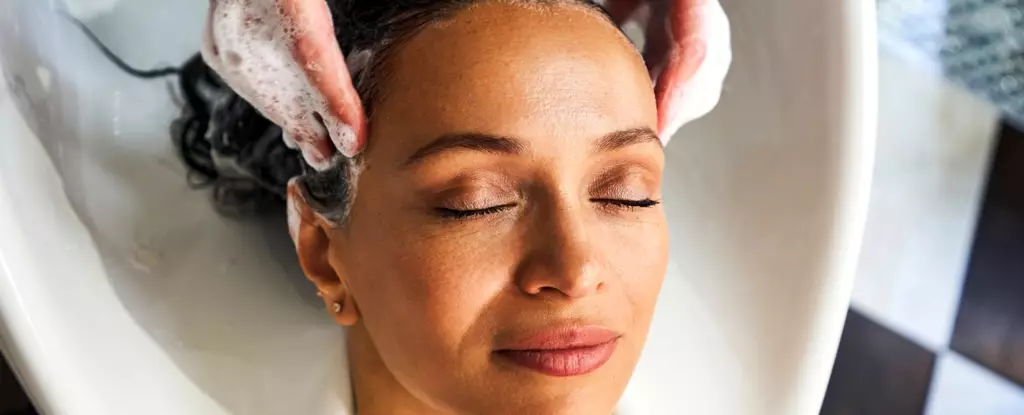Going to the hairdresser typically evokes feelings of luxury and self-care, but for a select few, this experience can take a dark turn into the realm of serious health risks. Beauty Parlor Stroke Syndrome (BPSS) is a rare yet concerning condition that can transform a simple shampoo into a potential medical emergency. This phenomenon, first articulated by neurologist Michael Weintraub in 1993, highlights the unexpected consequences of a seemingly innocuous act: washing hair at a salon.
At the heart of BPSS lies the awkward positioning clients often assume during hair washing. Typically, patrons recline in a manner that requires them to extend their necks backward over the cold, hard rim of the shampoo basin. This posture, combined with the jarring movements that can accompany vigorous washing, creates an environment ripe for injury. The primary concern is a disruption in blood flow to the brain, which can lead to a stroke—a devastating event that can have long-term consequences on a person’s health and well-being.
A stroke occurs when the brain is deprived of oxygen-rich blood, either due to a blockage, often caused by a clot, or the rupture of a blood vessel. During a hair wash, the unusual angle of the neck can inadvertently compress the vertebral arteries that play a critical role in supplying blood to the brain. Such compression can have dire consequences, manifesting not only as neck pain but as full-blown stroke symptoms.
Who is at Risk?
While strokes are commonly associated with older individuals or those suffering from underlying health conditions such as hypertension or diabetes, BPSS does not discriminate by age or health status. Research indicates that women over the age of 50 are particularly vulnerable, especially if they have previous spinal issues or arterial narrowing. However, cases of BPSS have been documented among younger, healthier individuals as well, emphasizing that awareness is essential.
In a study conducted in Switzerland, only ten cases of BPSS were confirmed over a span from 2002 to 2013, reinforcing the notion that while BPSS is rare, it is not entirely negligible. Hence, the importance of recognizing warning signs becomes paramount.
Awareness of BPSS symptoms can be the difference between a minor inconvenience and a serious health crisis. Typical indicators include severe headaches, dizziness, visual disturbances, and nausea. In some cases, individuals may even experience paralysis on one side of the body or loss of consciousness, resembling the symptoms of a classic stroke.
Alarmingly, these symptoms can manifest after a delay, complicating diagnosis and leading to potential misinterpretations of BPSS as a more standard stroke. This highlights a critical need for both hairstylists and clients to be vigilant and proactive in addressing any signs of discomfort immediately.
The onus of safeguarding against BPSS doesn’t fall solely on clients; hairstylists also play a crucial role. Those with any history of neck discomfort or cardiovascular issues should communicate with their hairdressers beforehand. Clients who find the traditional backwash setup uncomfortable can request alternative positions, such as leaning forward over the sink, to alleviate strain on the neck.
Other strategies include minimizing the duration one spends at the backwash, opting for a gentle wash, and signaling any discomfort during the shampooing process to the stylist. By taking these precautionary measures, both clients and stylists can work together to ensure a safer salon experience.
While BPSS presents a unique risk, it’s essential to maintain perspective. The vast majority of salon visits result in relaxation and rejuvenation. Regular hair care appointments contribute to improved mental health, self-esteem, and overall well-being. Thus, rather than letting the threat of BPSS deter us from enjoying the pampering we associate with hairdresser visits, proactive strategies can allow us to safely indulge in this comforting ritual.
Ultimately, knowledge is power. By understanding BPSS and adopting simple measures to protect oneself, we can continue to enjoy the soothing experience of having our hair washed while minimizing any potential dangers. The hair towel need not be cast aside but instead can serve a dual function—continuing to provide comfort as we nourish ourselves during these essential moments of self-care.


Leave a Reply